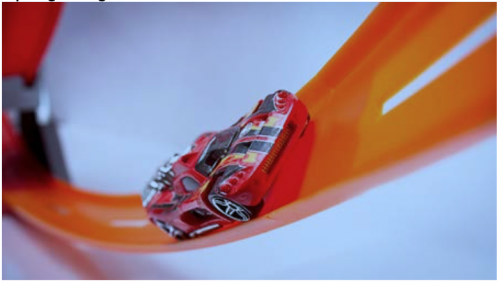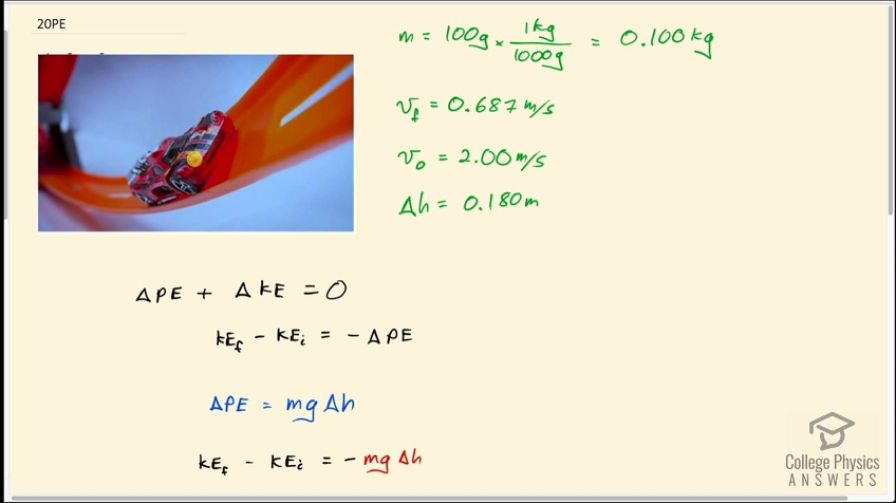Question
A 100-g toy car is propelled by a compressed spring that starts it moving. The car follows the curved track in Figure 7.38. Show that the final speed of the toy car is 0.687 m/s if its initial speed is 2.00 m/s and it coasts up the frictionless slope, gaining 0.180 m in altitude.

Final Answer
Solution video
OpenStax College Physics, Chapter 7, Problem 20 (Problems & Exercises)

vote with a rating of
votes with an average rating of
.
Calculator Screenshots
Video Transcript
This is College Physics Answers with Shaun Dychko. Toy car starts off with some speed low down here and rises up the track and by doing so, it's gaining some gravitational potential energy and because energy has to be conserved, some of that energy has to come from somewhere else and that somewhere else will be its kinetic energy. So it's going to lose the kinetic energy in order to gain potential energy and we are told there's no friction so that means we can use this way of stating the conservation of energy which has no non-conservative forces and consequent thermal energy loss involved. Okay! So the mass of the car is 100 grams which we will convert into kilograms at this stage by multiplying by 1 kilogram for every 1000 grams so we have 0.100 kilograms mass. The final speed that we are meant to verify is that it will be going 0.687 meters per second when it gets to the top of the track which is at a height of 0.180 meters and it starts with an initial speed of 2.00 meters per second. So energy is conserved which means that the final kinetic energy minus the initial kinetic energy which is— we have this expanding into these two terms— going to equal the negative of the change in potential energy because we can subtract ΔPE from both sides here. So this is to say that what is gained in kinetic energy is lost in potential energy. Now the change in potential energy is going to be the force of gravity which is mg multiplied by the distance through which it acts which is this change in height. Now strictly speaking that's not... this is the component of the displacement of the car parallel to the force. Anyways these numbers are already accounting for that: this height is straight up and this gravity is straight down and so that's the change in potential energy of the car. So we can substitute that in in place of ΔPE, we'll write mgΔh in its place. And then we'll add the initial kinetic energy to both sides and we get this line here that the final kinetic energy is the initial kinetic energy minus mgΔh and then substitute one-half mass times speed squared in place of each of these kinetic energies using final on the left and using v initial on the right. I guess I used the letter 'o' here instead of the letter 'i' but it's the same idea, this means initial. Okay but maybe I should change it just to be consistent. Okay! So we can multiply everything by 2 to get rid of these ugly fractions and then divide everything by m to get rid of the common factor mass and then m cancels everywhere and this factor 2 cancels with the fractions but also has to get multiplied by this term and so we are left with this 2 times gΔh here and we have v f squared equals v i squared minus 2gΔh. Then we take the square root of both sides and we get that the final speed is the square root of the initial speed squared minus 2 times acceleration due to gravity times change in height. So that is the square root of 2.00 meters per second squared minus 2 times 9.80 meters per second squared times 0.180 meters which is a speed of 0.687 meters per second which is what we wanted to show.
